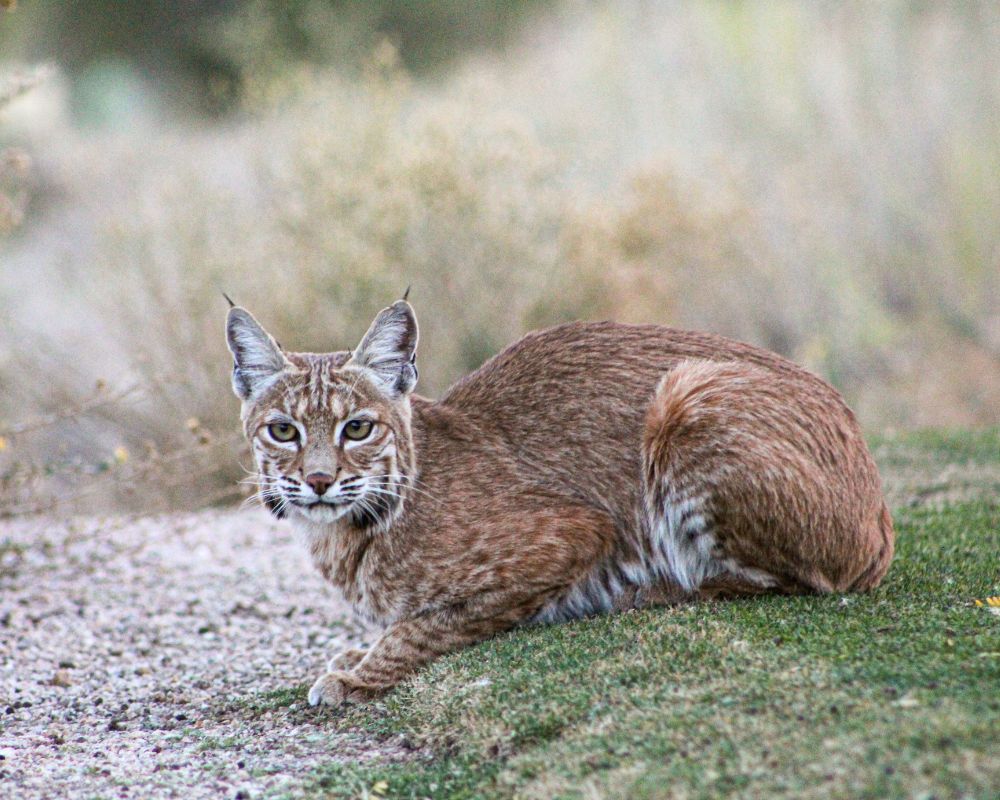Bobcats are a common sight in many suburban and rural areas, and their presence often raises concerns for pet and property owners. Fences have long been seen as a solution to keep these wild felines out of yards, but the question remains – can bobcats climb fences? This blog post aims to provide a clear understanding of the climbing abilities of bobcats and offer effective solutions for keeping them at bay.
Whether you’re a pet owner or simply want to protect your garden, this post will provide valuable information and practical solutions to secure your property from bobcat intrusion.
In general, we can say that Bobcats are skilled climbers and can climb fences if they need to. Their strong front claws and agility allow them to easily scale vertical surfaces, including fences. However, they usually prefer to roam and hunt in their natural habitats, such as forests and deserts, rather than in urban areas.
However, this is not enough to answer such a question. What about the different types of fences? Can bobcats pass them all? So, let’s dig deeper:
Can Bobcats Climb Fences?
There are 2 main factors that we need to study to know to what degree can bobcats jump over your fence:
- Bobcats’ Physical Abilities
- Factors that Affect Bobcat Climbing Ability
- Height of the Fence
- Type of Fence
- Obstacles on the Fence
1. Bobcats’ Physical Abilities
Bobcats are known for their agility and physical abilities, which allow them to easily jump over fences. They have strong hind legs that can propel them several feet into the air, allowing them to clear tall fences with ease.[1]
Bobcats are also excellent climbers, with sharp claws that can grip rough surfaces, making it easier for them to get over obstacles. In addition to their jumping and climbing abilities, bobcats are also fast runners and good swimmers, making them well-equipped to navigate a variety of environments.
2. Factors That Affect Bobcat Climbing Ability

Bobcats’ physical abilities are something that you don’t have any control over. However, there are some factors that you can control:
Height Of The Fence
The height of a fence is one of the factors that can affect a bobcat’s ability to climb. Bobcats are excellent climbers and can easily scale fences that are up to 6 feet tall. However, if the fence is taller than 6 feet, it may become more difficult for the bobcat to climb, as they would need to use their hind legs more and their front legs less, which can make it harder to balance.
Additionally, if the fence has smooth or slippery surfaces, this can further reduce the bobcat’s ability to climb, as they may struggle to find traction. These factors can make it more challenging for bobcats to access areas beyond the fence and may impact their behavior and movements.
Type Of Fence
The type of fence can also be a factor that affects a bobcat’s ability to climb. Some types of fences are more conducive to climbing than others.
For example, chain link fences are relatively easy for bobcats to climb, as they provide plenty of space for the bobcat to get their claws into and climb up.
On the other hand, solid wood fences can be more challenging for bobcats to climb, as they don’t have as many spaces to grip onto and can be slippery. Vinyl fences are also difficult for bobcats to climb, as they have a smooth surface that can make it hard for the bobcat to get traction.
Additionally, barbed wire fences can be dangerous for bobcats to climb, as they can get hurt by the sharp barbs. Thus, the type of fence can impact the ability of a bobcat to access certain areas and can affect its behavior and movements.
Obstacles On The Fence
Obstacles on the fence, such as spikes or protrusions, can also affect a bobcat’s ability to climb. If there are obstacles on the fence that make it difficult for the bobcat to grip or climb, this can reduce its ability to access areas beyond the fence. For example, if there are spikes on top of a fence, the bobcat may struggle to balance and may be unable to climb over the fence.
Additionally, if there are obstacles that are sharp or pointy, such as metal hooks or nails, the bobcat could be injured if they attempt to climb over the fence.
Prevention Measures To Prevent Bobcats From Climbing Your Fence
Well, depending on the previously mentioned information, we can extract some valuable measures to take to keep Bobcats out.
1. Choose The Right Fence
Choosing the right fence to prevent bobcats from jumping over it can be a challenge, but there are several key factors to consider:
- Make It High: A fence that is at least 8 feet tall is recommended to prevent bobcats from jumping over it.
- Choose the Proper Material: A fence made of solid wood or vinyl is recommended, as these materials provide a smooth surface that is difficult for bobcats to grip. Additionally, these materials can reduce the risk of injury, as there are no sharp edges or hooks that the bobcat could get hurt on.
2. Add Some Obstacles
Fences with obstacles, such as spikes or protrusions, can be effective in preventing bobcats from jumping over them.
Also, Adding latticework or a trellis to the top of a fence can make it difficult for bobcats to climb over. The lattice work creates an extra layer that the bobcat has to get past, making it more difficult for them to climb over the fence.
An electric current also can be run along the top of the fence to discourage bobcats from jumping on it. You can also use sensors. Sensors that trigger an alarm or emit a loud noise can be installed along the top of the fence to scare off any bobcats that try to jump over.
3. Take Care Of The Angle
If the fence is installed at a steep angle, it can make it easier for bobcats to climb over. To prevent this, it is recommended to install the fence at a slight angle, such as a 10-degree angle, which makes it more difficult for the bobcat to get a foothold and climb over.
4. Keep The Area Clear
Keeping the area around the fence clear is an important step in preventing bobcats from jumping it. The following tips can help:
- Trim vegetation: Trimming trees and shrubs near the fence can remove potential jumping platforms for bobcats.
- Remove debris: Removing debris such as piles of wood or large rocks can eliminate places for bobcats to hide and gain momentum for a jump.
- Fill gaps: Filling gaps under the fence or near the base can prevent bobcats from digging their way under it.
- Eliminate attractants: Removing food and water sources, such as bird feeders, near the fence can reduce the attraction of bobcats to the area.
- Secure trash: Securing trash cans and compost bins can prevent bobcats from being attracted to the area by the smell of food waste.
- Remove cover: Removing cover near the fence such as tall grass or dense vegetation can make it more difficult for bobcats to approach the fence undetected.
- Slope: If the ground slopes downward away from the fence, it can make it easier for bobcats to jump over the fence. To prevent this, it is recommended to install the fence on level ground or to slope the ground upward away from the fence.
It’s important to remember that bobcats are protected by law in some areas, and it may be necessary to obtain permits or follow specific guidelines when removing vegetation or other potential habitats near the fence. Consult with local wildlife agencies for specific regulations.
FAQs
Do Bobcats Dig Under Fences?
Bobcats are known to be excellent climbers and diggers, and they have been known to dig under fences to gain access to food or shelter. They have sharp claws that allow them to dig and climb with ease, and they are also strong enough to dig through soil and break through barriers.
If a Bobcat is motivated enough, it can dig a hole under a fence and slip through to get to the other side. To prevent Bobcats from digging under fences, it’s recommended to bury the fence several inches into the ground or install a barrier, such as a concrete footing or metal barrier, along the bottom of the fence to prevent digging.
Can Bobcat Jump A 6 Feet Fence?
Bobcats are capable of jumping up to 6 feet high, but it depends on various factors such as the age, health, and motivation of the individual bobcat. Some healthy and motivated bobcats have been known to jump even higher.

Hi, I’m Ali Tarek, the founder of Animalsman. I’ve always been passionate about pets, especially dogs and cats, and I created this website to share practical tips, easy recipes, and helpful care advice for fellow pet lovers. My goal is to make pet care simple, enjoyable, and accessible for everyone. When I’m not writing or curating content, you’ll usually find me spending time with my furry friends or learning new ways to keep them happy and healthy.



